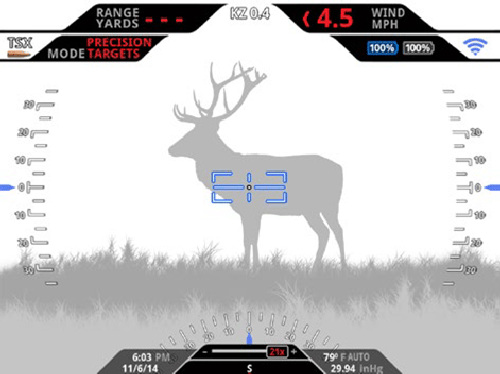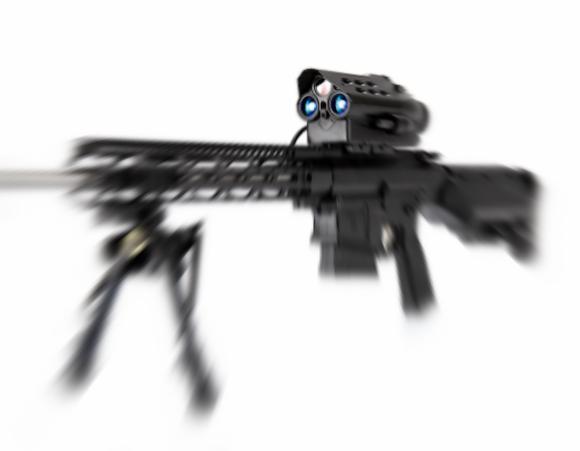Mosul (northern Iraq), 23 June 2017: a Canadian special forces sniper team hits an ISIS militiaman from 3.540 meters away, using a Mc Millan Tac - 50 rifle (I think the use of a .408 Chey Tac caliber is more likely, but the official data on this matter were and remain confidential), eliminating him with the first shot.
The weapon was controlled by the PGF integrated fire direction system - Precision Guided Firearm - a ballistic control calculator which manages in order: an advanced optics, a computerized trigger system, a velocity and temperature sensor placed on the muzzle, a portable data presenter, glasses Head-Up Display, a portable electrical power unit (usually integrated into the stock).
In practical terms, the PGF handles all phases of shooting, and by ALL PHASES I mean also pull the trigger, and not just calculate and correct the trajectory in an active way, if you want: he shoots. And he will do it without breathing, without tearing the action, without a heartbeat, and even without any human doubt, I might add. Almost.
This means that even a soldier with sufficient tactical skills, as long as he possesses specialized technical knowledge, today (or rather, already yesterday) can hit a target located kilometers away, in difficult weather conditions, even from a very difficult location.

PGF essentially eliminates all human errors (almost everyone, hopefully) and will only fire when he has scientifically verified that the bullet will hit the selected target (again by one man, hopefully 2).
At 800 meters, the system will "error" by an average of 1,7 centimeters, compared to the average 11 of highly trained marksmen, about 8 times better than the best of them in the world.
The "shooter" can observe the target through the optics, or use Head Up Display glasses, derived directly from experiences gained in aeronautics, which display all the tactical and ballistic data on the lenses, which are obviously also available on the observer's tablet (if present) and shared (if requested) with other units in the field, with the command center (perhaps located on another continent), as well as in a network with other possible military and political entities. Once the target has been acquired and the execution order has been confirmed, the specialist will give the firing input, but the PGF system will carry out the action, which will carry it out only when the firing parameters guarantee an almost absolute certainty of a successful hit, and on the first try.
I understand that to some this may seem like a science fiction movie, or so, but what I described above happened 6 years ago, and was confirmed by the commands involved.
I would add that, 6 years ago, the discussion on A.I. it was not yet as present as today: I wonder where certain "special forces" have (they...) arrived now, among other things in the presence of a war like the one in Ukraine, which offers plenty of significant experiences for development purposes of new weapon systems, as happened in almost every conflict...
 It may seem that the writer has a sort of regret for the progressive and inevitable dehumanization of combat. This is not the case: technical progress is a good and right thing (usually). Of course, the tragic art of placing a projectile at long distances, against an enemy and against all the adverse elements of the battlefield, with the relatively simple technology represented by a rifle, an optic and an ammunition, is perhaps a different thing.
It may seem that the writer has a sort of regret for the progressive and inevitable dehumanization of combat. This is not the case: technical progress is a good and right thing (usually). Of course, the tragic art of placing a projectile at long distances, against an enemy and against all the adverse elements of the battlefield, with the relatively simple technology represented by a rifle, an optic and an ammunition, is perhaps a different thing.
Without neglecting the psychological aspects relating to "looking in the face", through a lens, as if he were a few meters away from us, another human being, but unfortunately "with the uniform of another colour" (and knowing that he is at our time in the same situation), I cannot deny that a system like the PGF is a tactical (and also strategic) leap of extraordinary level. This also taking into account the side effects caused by a missile or an LGB (Laser-Guided Bomb), perhaps launched by a drone piloted by a 21-year-old lieutenant, in an air-conditioned container parked in a base 6000 km away, sipping a low-calorie drink (for those wishing to learn more I suggest the booklet "Distance Executions" by William Langewiesche), and avoided instead by the use of a single rifle bullet.
Of course, if I had known this earlier, I would have spent more time playing some video games, and not on patrol and training in some remote place. But that's it.
Images: Talon Precision Optics












